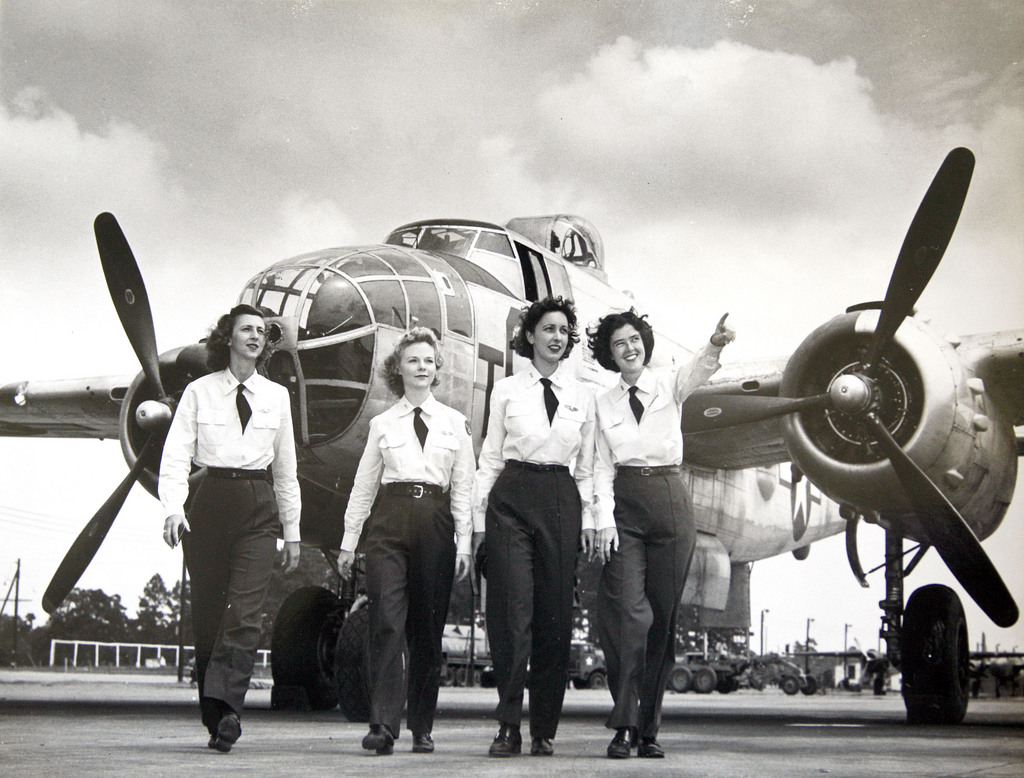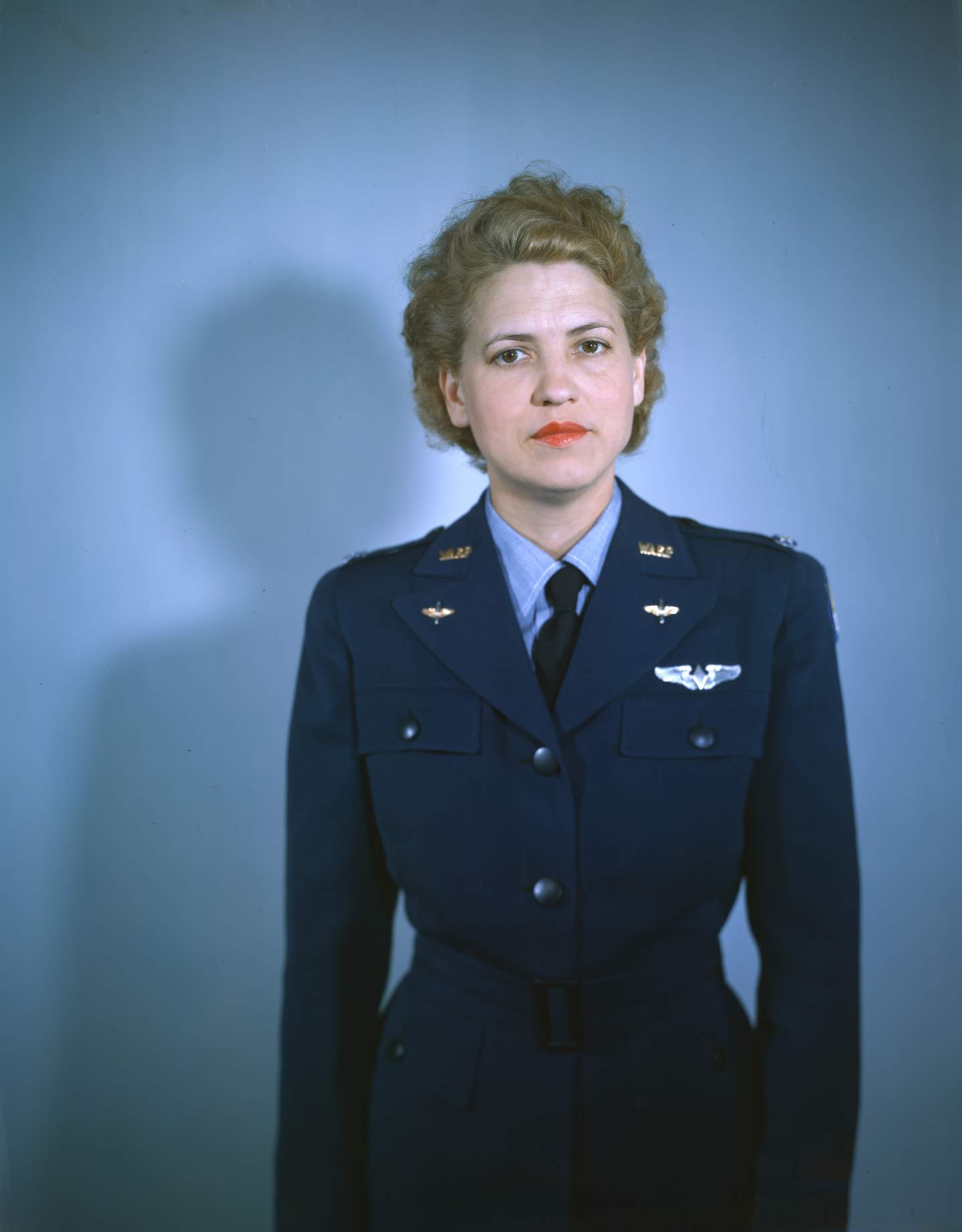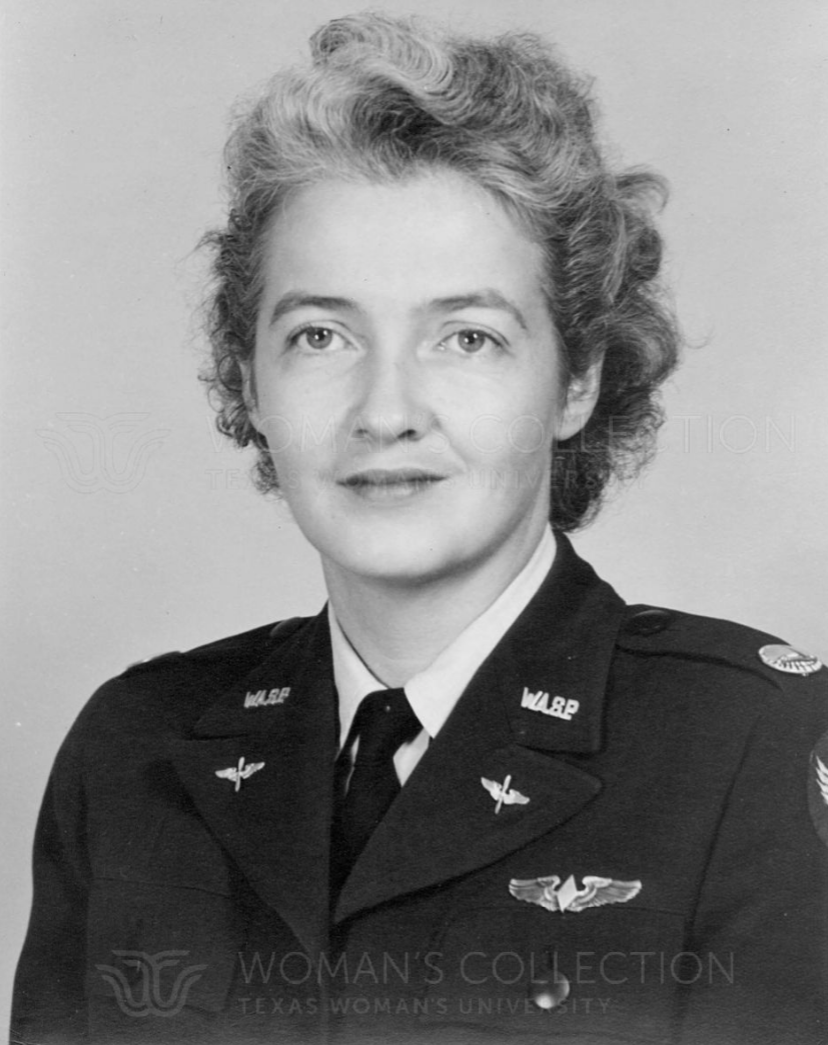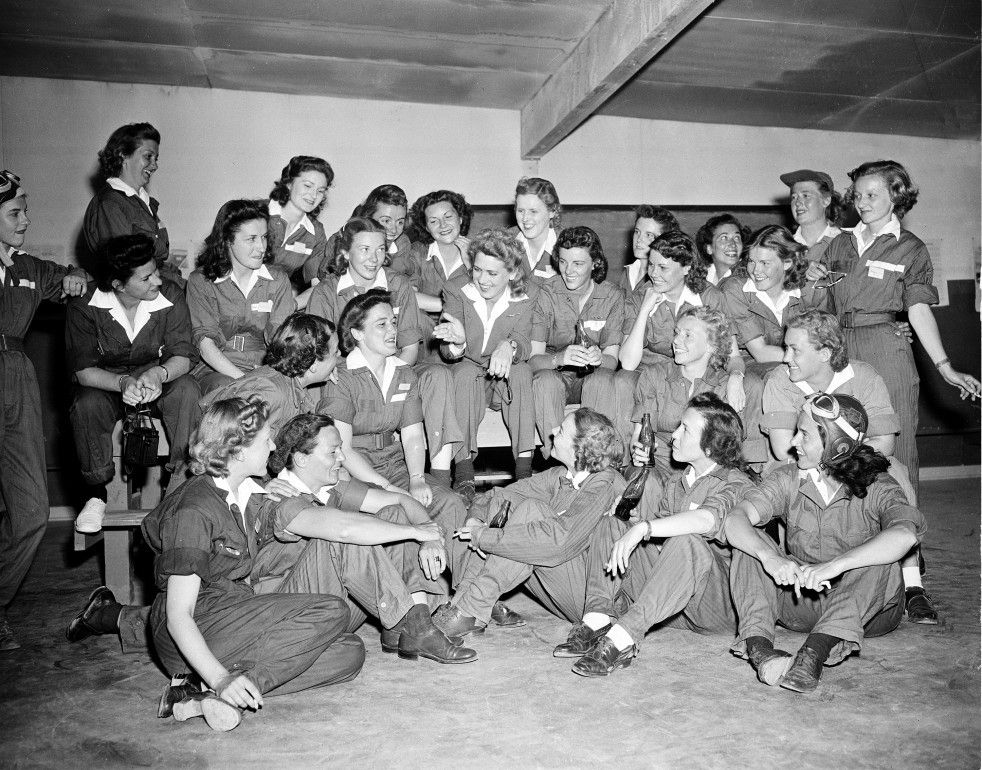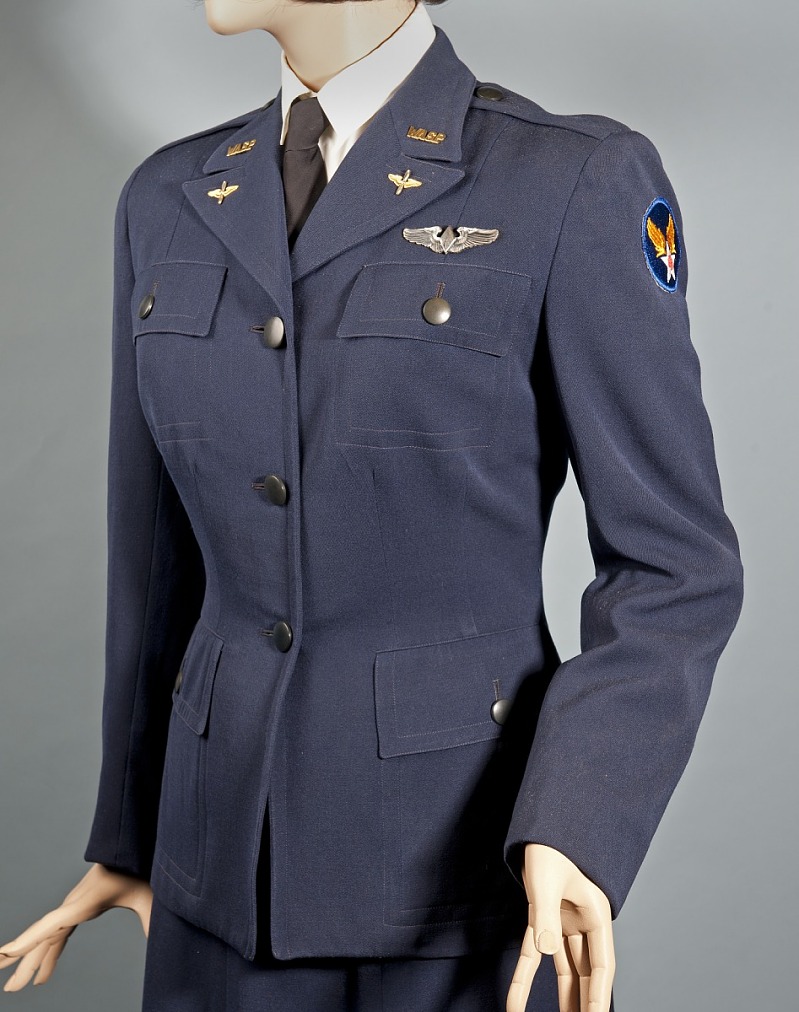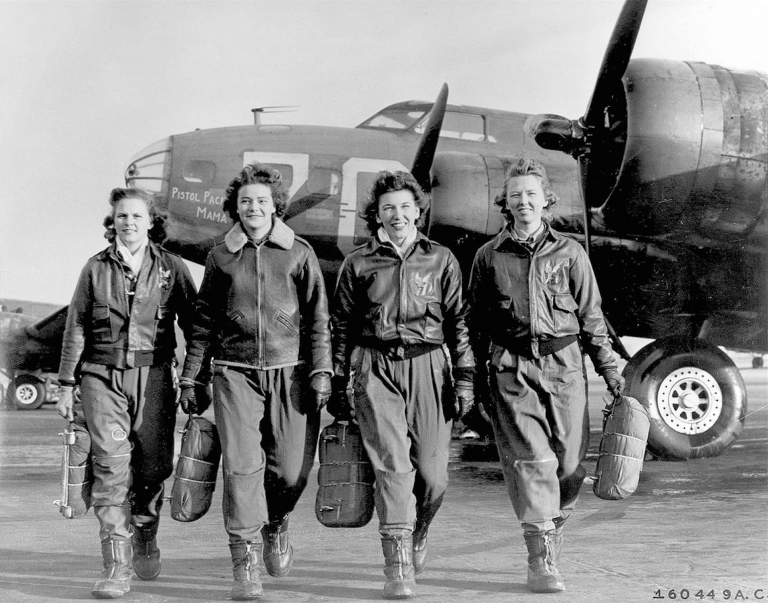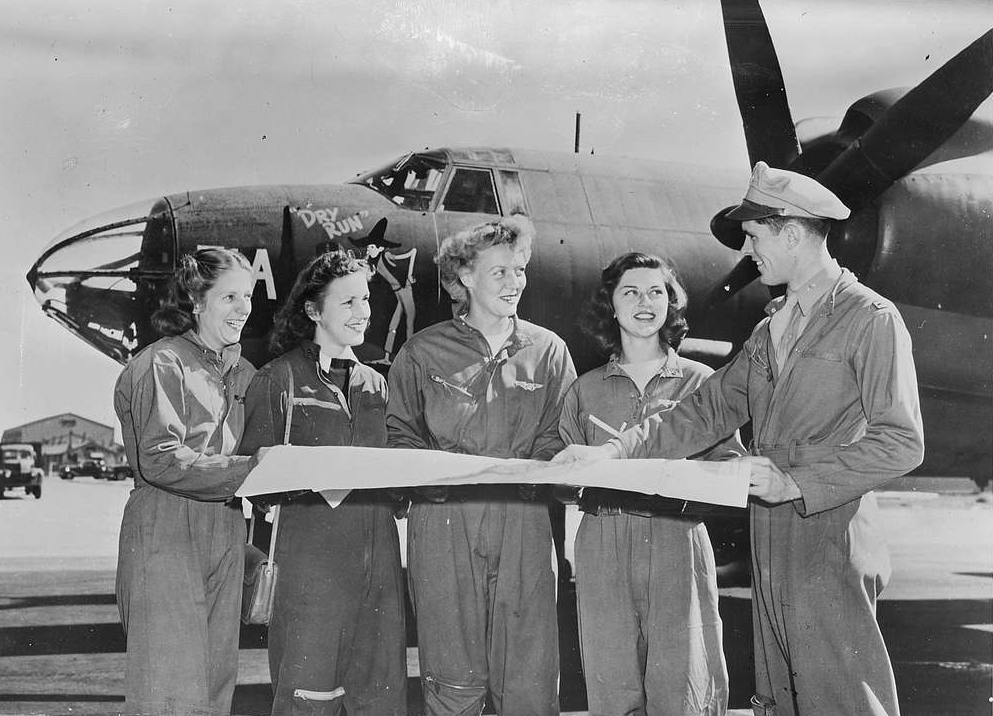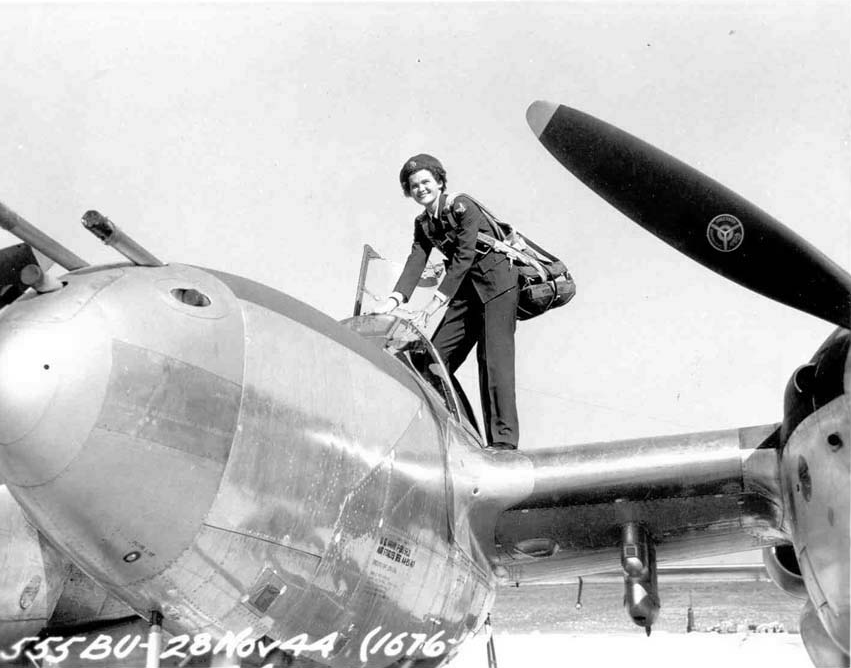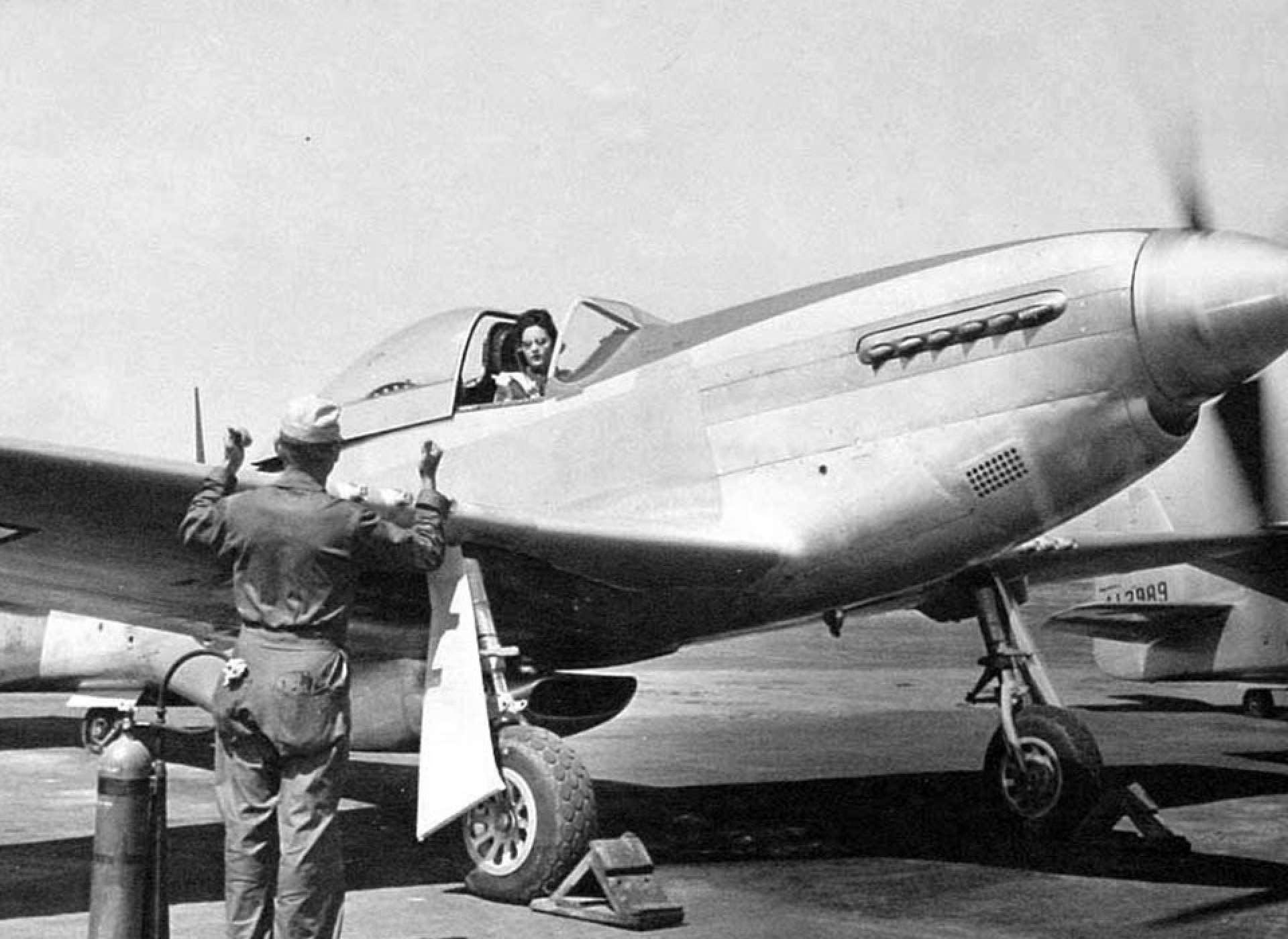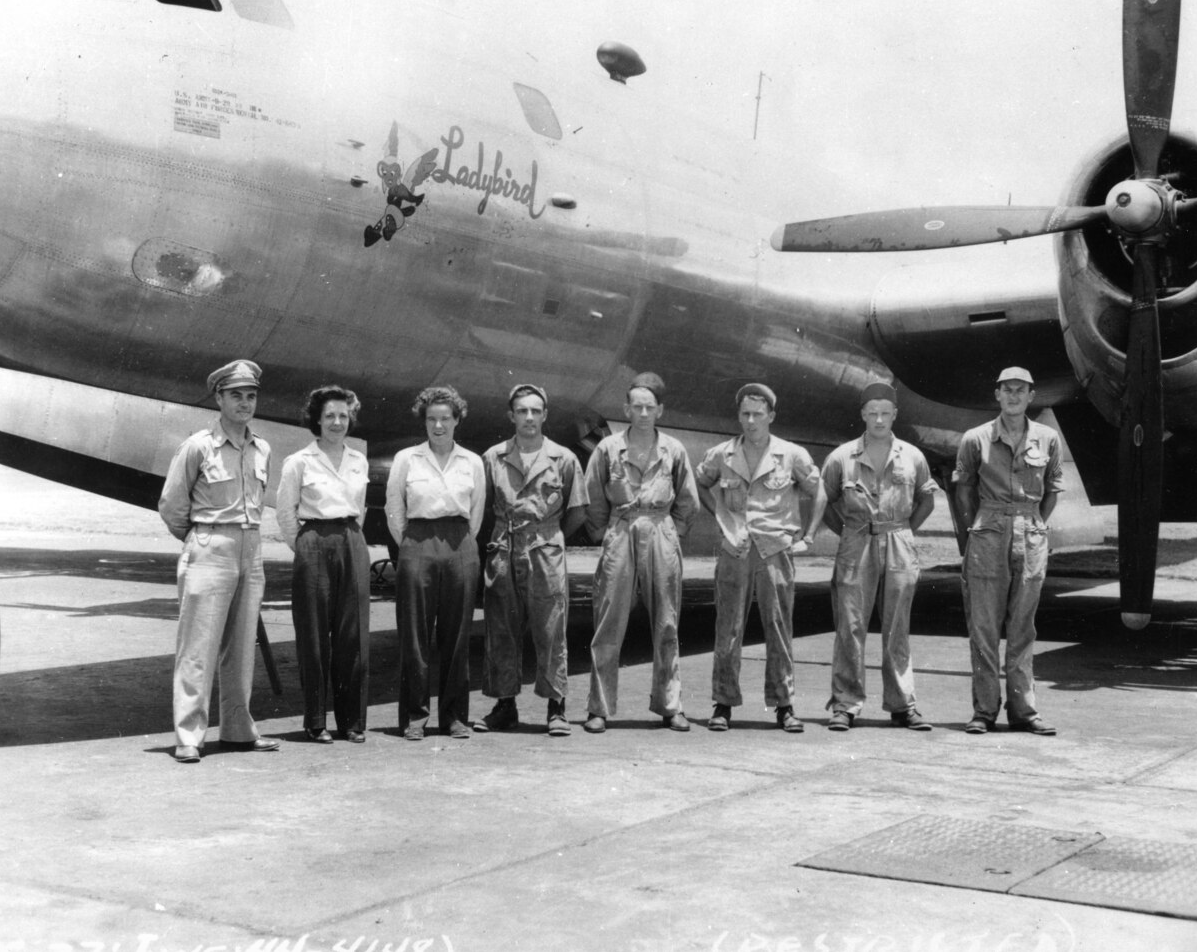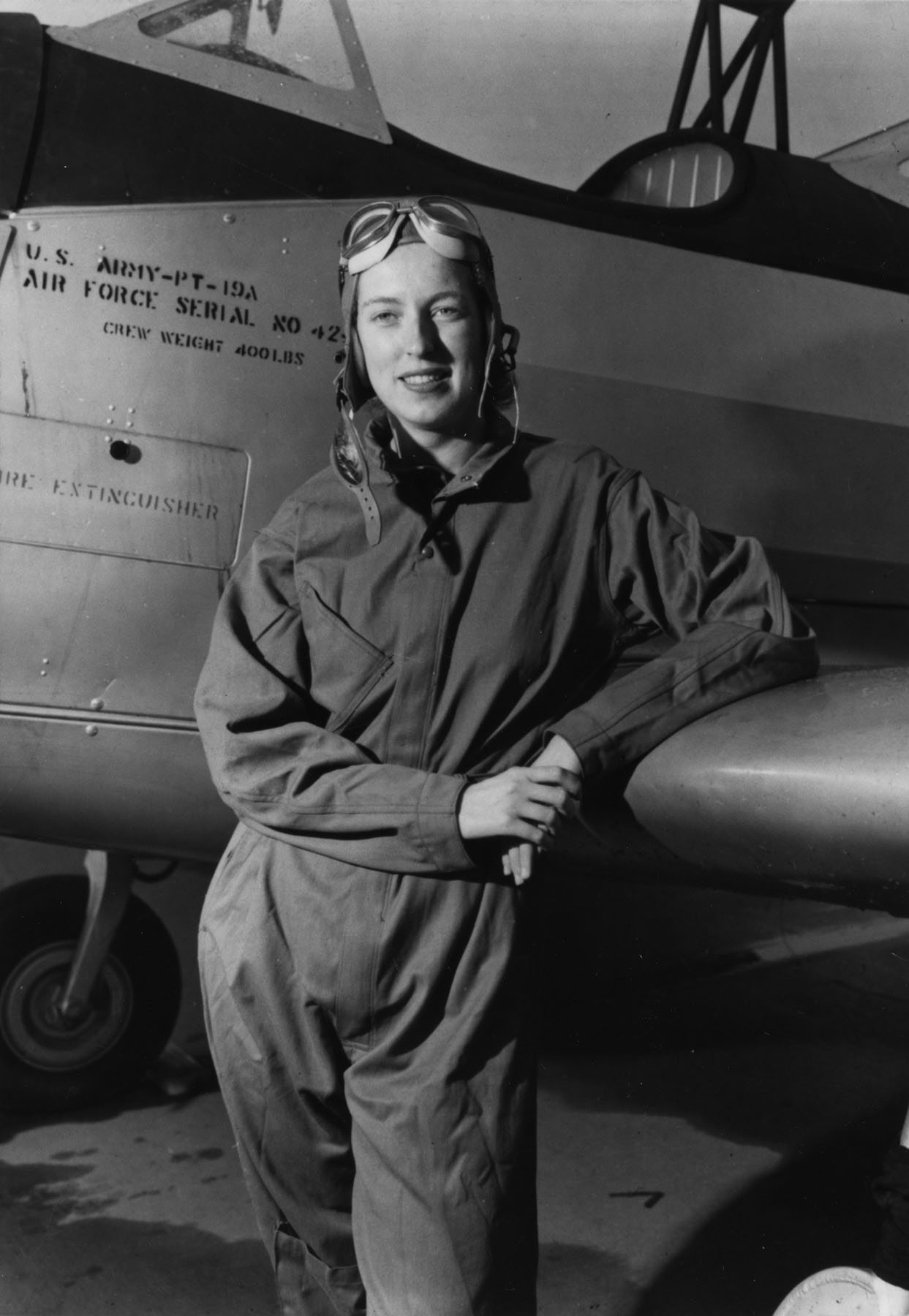

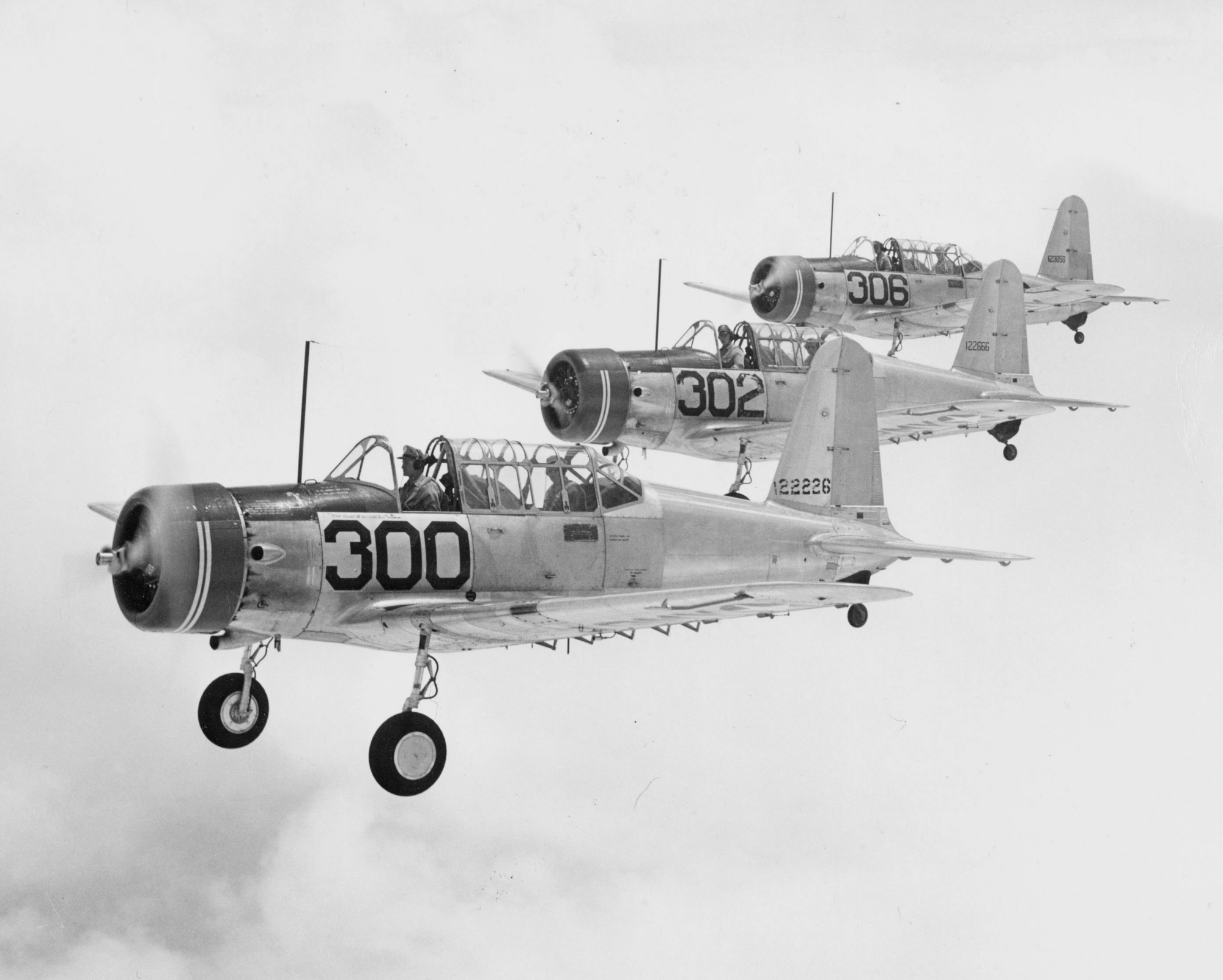
The left wing of Fort’s airplane was struck from behind by another airplane, BT-13A 42-42450, flown by Flight Officer Frank E. Stamme, Jr., U.S. Army Air Corps.
Fort’s BT-13 crashed approximately 10 miles (16 kilometers) south of Merkel, Texas, and Cornelia Fort was killed. Her body was found in the wreckage of the airplane. The canopy latches were still fastened.
The Associated Press reported:
Woman Ferry Pilot Killed
LONG BEACH, Calif., March 22. (AP)—The army air transport command’s ferrying division has announced the death of Cornelia Fort, twenty-three-year-old Nashville, Tenn., pilot.
Miss Fort was killed, the command said, on a routine ferrying flight yesterday at Merkel, Tex. She was the second woman to sign up with the women’s auxiliary ferrying squadron, and had had 1100 hours in the air.
Cause of the accident has not been learned, the command reported.
Fifteen months ago, a private flying instructor, Miss Fort was giving a lesson over Honolulu when the Japs attacked. Her surprised student almost piloted their plane into an enemy ship before she grabbed the controls, she related later.
Following her evacuation from the Hawaiian islands, she joined the auxiliary ferrying squadron and was stationed here. Miss Fort was the daughter of Cornelia Clark Fort of Fortland farms, near Nashville.
—Reno Evening Gazette, Vol. 77, No. 69, Monday, 22 March 1943, Page 7, Column 5
Cornelia Clark Fort was the first female pilot killed while on active duty with the United States military. She was 24 years old. Miss Fort was buried at the Mount Olivet Cemetery, Nashville, Tennesee.
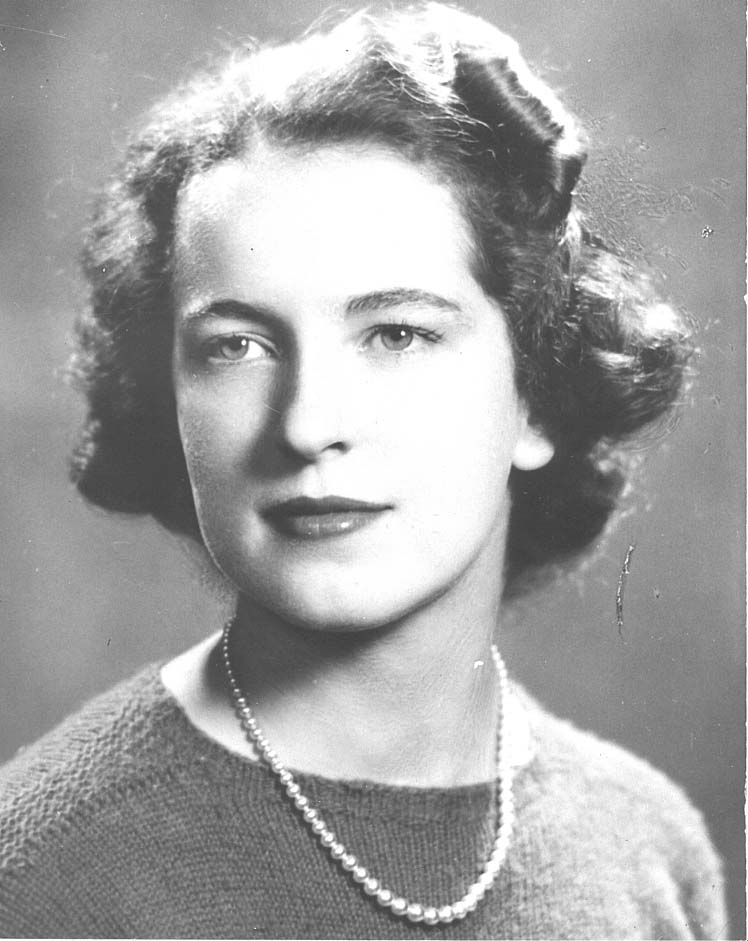
Cornelia Clark Fort was born into an affluent family in Nashville, Tennessee, 5 February 1919. She was the fourth of five children of Dr. Rufus Elijah Fort and Louise Clark Fort. Her father was a prominent surgeon who co-founded the National Life and Accident Insurance Company. The family lived at Fortland, an estate east of Nashville.
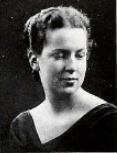
Cornelia attended the Ward-Belmont School in Nashville, then studied at the Ogontz School in Philadelphia. (Amelia Earhart had also attended Ogontz.) In 1937, Miss Fort transferred to Sarah Lawrence College, Yonkers, New York, where she studied Literature. She graduated 10 June 1939.
After taking a flight with a friend, Jack Caldwell, in January 1940, she pursued an interest in aviation, starting flight lessons the following day. Miss Ford had earned her pilot certificate and flight instructor certificate by June 1940. She was the first woman to become an instructor at Nashville. With the Civilian Pilot Training Program, she first went to Fort Collins, Colorado, where she taught for about three months, then went on to Honolulu, Territory of Hawaii.
On the morning of 7 December 1941, Cornelia Fort was practicing touch-and-goes with a student at John Rodgers Airport, near Honolulu.
Shortly before 8:00 a.m., Miss Fort saw a silver military-type airplane approaching her Interstate Cadet at high speed. She took over the flight controls from Mr. Suomala and put the trainer into a steep climb. The other airplane flew directly under, close enough that she felt the vibrations of its engine. She saw that its wings carried the “rising sun” insignia of the Empire of Japan.
Fort landed the Cadet at John Rogers Airport, which was being attacked by Japanese airplanes. Another trainer on the ground was destroyed by machine gunfire and its instructor killed.
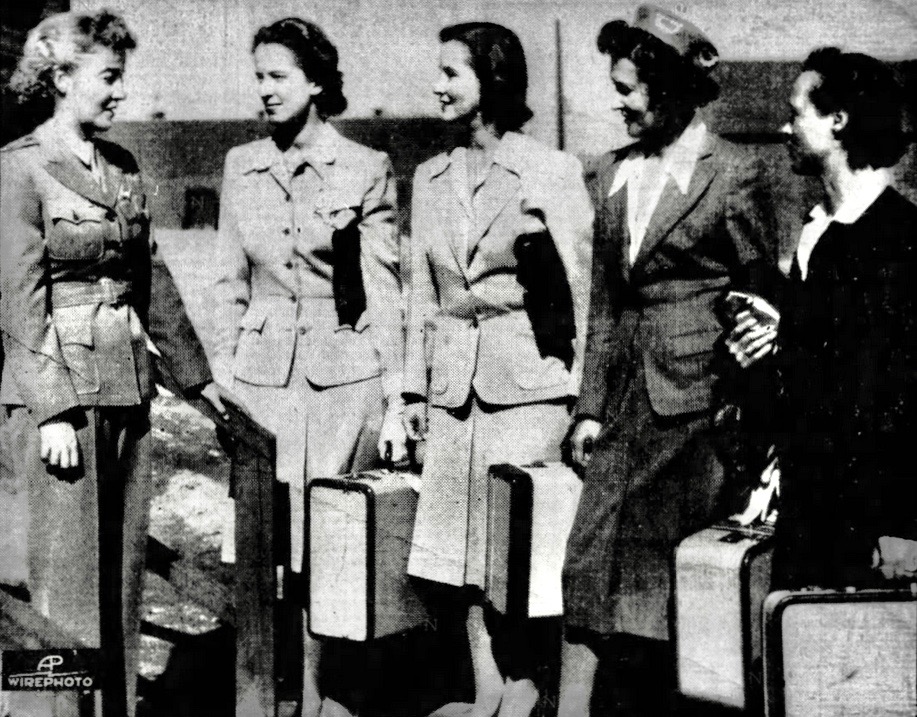
Following the attack on Pearl Harbor, all civilian aircraft were grounded. Cornelia Fort was able to return to the mainland United States in early 1942. In September she was one of the first 25 women accepted into the Women’s Auxiliary Ferrying Squadron. Miss Fort was assigned to the 6th Ferrying Group based at Long Beach, California.
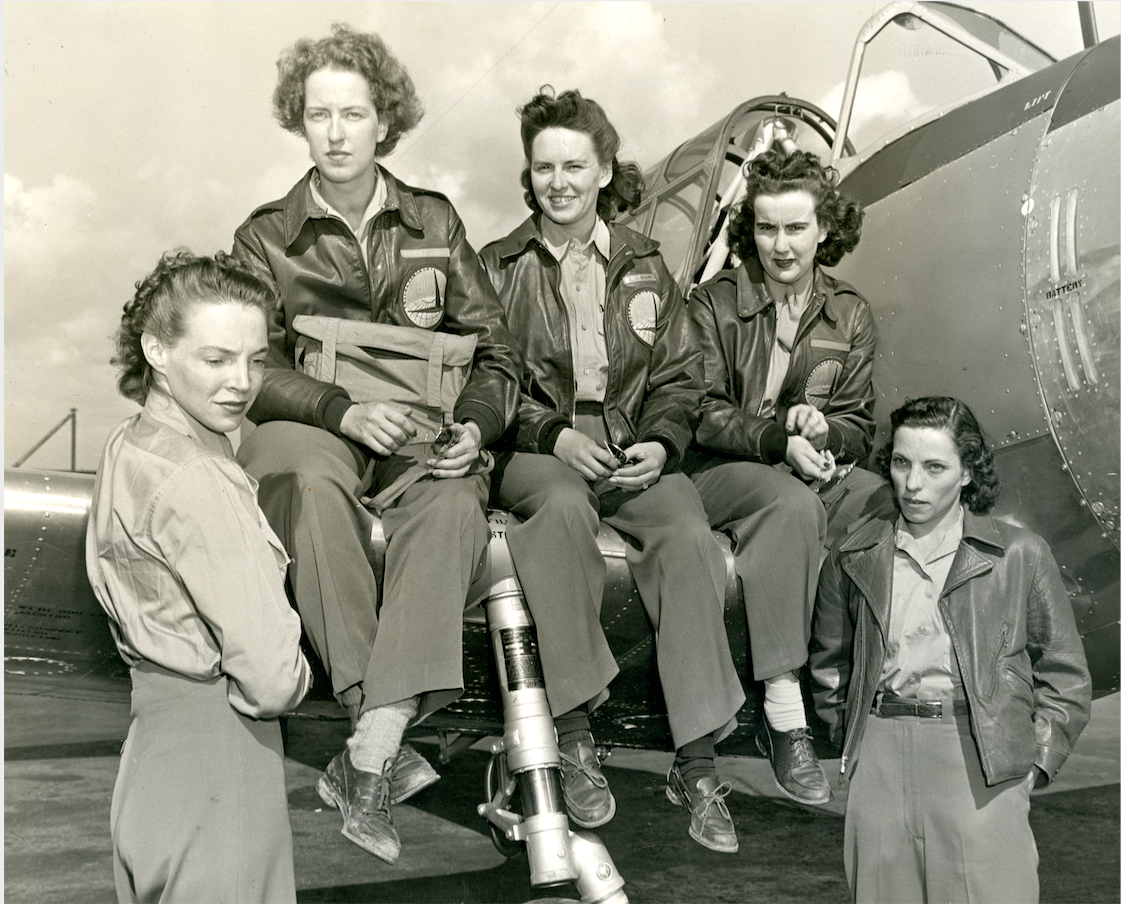
Air & Space/Smithsonian quoted from a letter written by Fort in a January 2012 article:
“I dearly loved the airports, little and big. I loved the sky and the airplanes, and yet, best of all I loved the flying. . . I was happiest in the sky at dawn when the quietness of the air was like a caress, when the noon sun beat down, and at dusk when the sky was drenched with the fading light.”
—Cornelia Clark Fort, 1942.
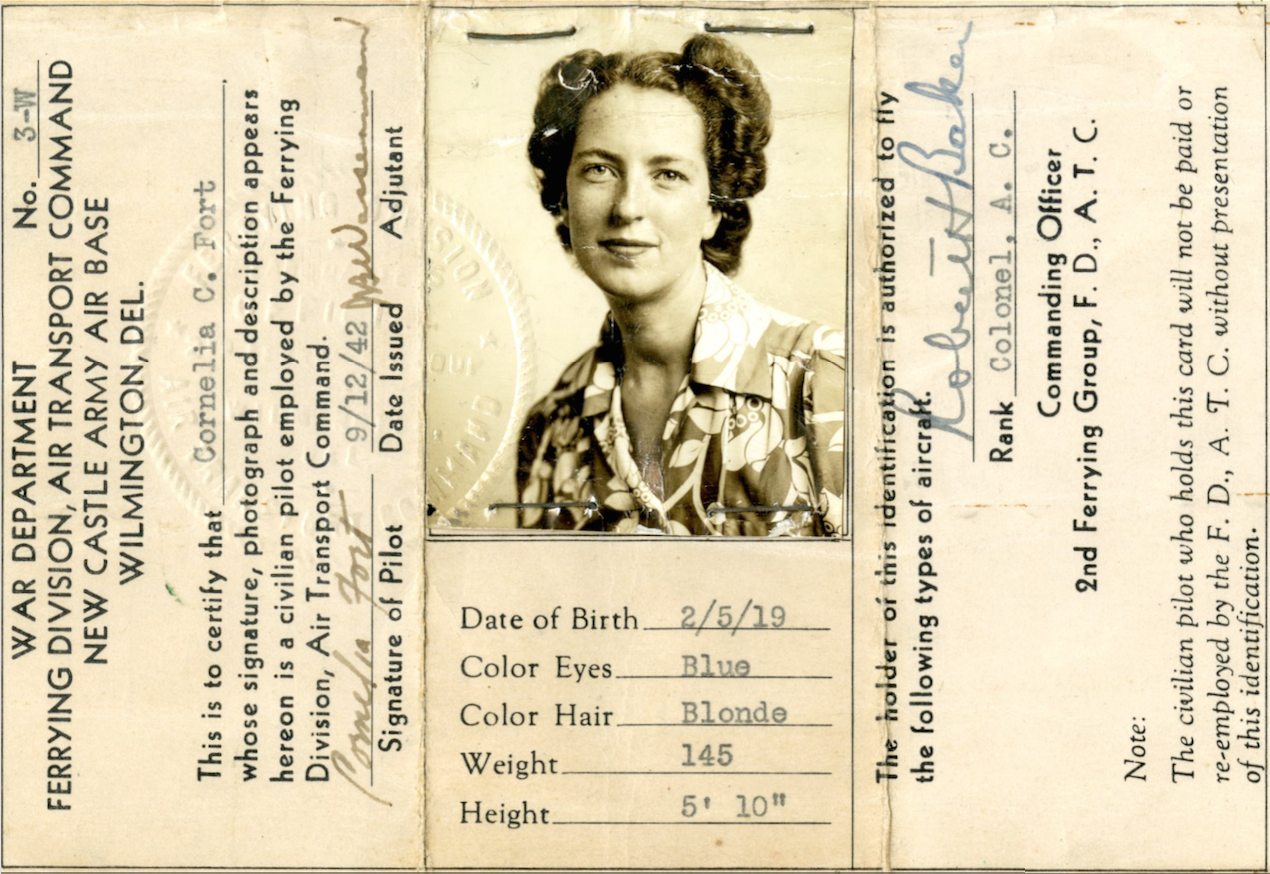
Frank Edward Stamme, Jr., was born at Dorchester, Illinois, 3 January 1920. He was the first of four children of Frank Edward Stamme, a machinist, and Bertha Catherine Peters Stamme.
Stamme enlisted as a private in the U.S. Army Air Corps at San Francisco, California, 5 November 1941. He had brown hair, gray eyes, was 6 feet, 1 inch (1.85 meters) tall and weighed 159 pounds (72 kilograms). At the time of the collision, he had approximately 250 hours flight time. Stamme was released from military service 16 January 1947. He died 19 February 1987 at San Pablo, California.
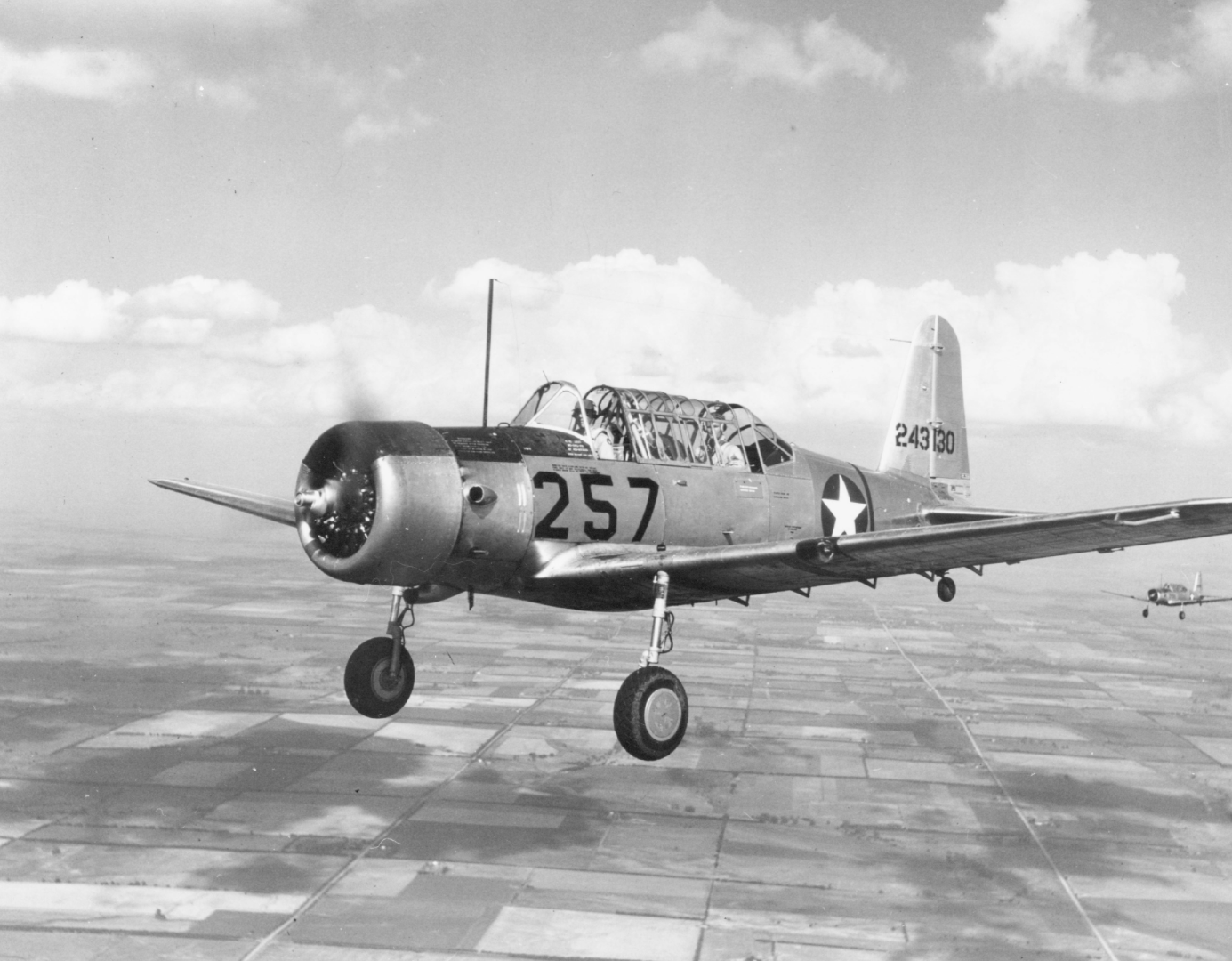
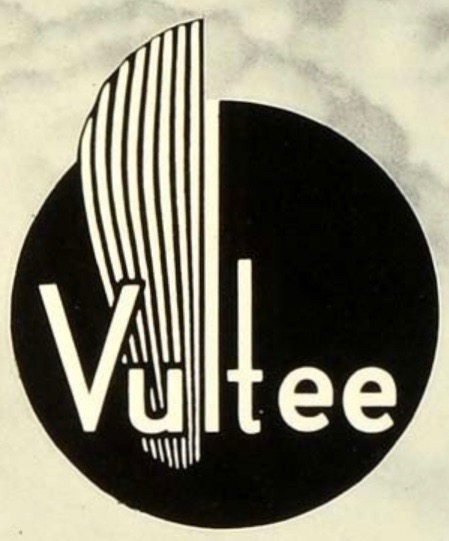
The BT-13A was powered by an air-cooled, supercharged, 986.749-cubic-inch-displacement (16.170 liter) Pratt & Whitney R-985-AN-1, -AN-3, or R-985-25 nine-cylinder radial engine. These engines had a compression ratio of 6:1, with Normal Power ratings from 420 horsepower at 2,200 r.p.m. at Sea Level to 450 horsepower at 2,300 r.p.m., and 440 horsepower to 450 horsepower at 2,300 r.p.m. for Takeoff. They were direct-drive engines which turned a two-bladed variable-pitch propeller. These engines were 3 feet, 6.38 inches (1.076 meters) long, 3 feet, 9.75 inches (1.162 meters) in diameter and weighed from 648 to 685 pounds (294–311 kilograms).
The BT-13A had a maximum speed (VNE) of 230 miles per hour (370 kilometers per hour). The service ceiling was 21,650 feet (6,599 meters) and range was 725 miles (1,167 kilometers).
Vultee built 9,525 BT-13 and BT-15 Valiant basic trainers between 1940 and 1945. Of these, 7,037 were the BT-13A and SNV-1 variant. By the end of World War II, the Vultee Valiant was considered obsolete and was replaced in U.S. service by the North American AT-6 Texan.
© 2020, Bryan R. Swopes
